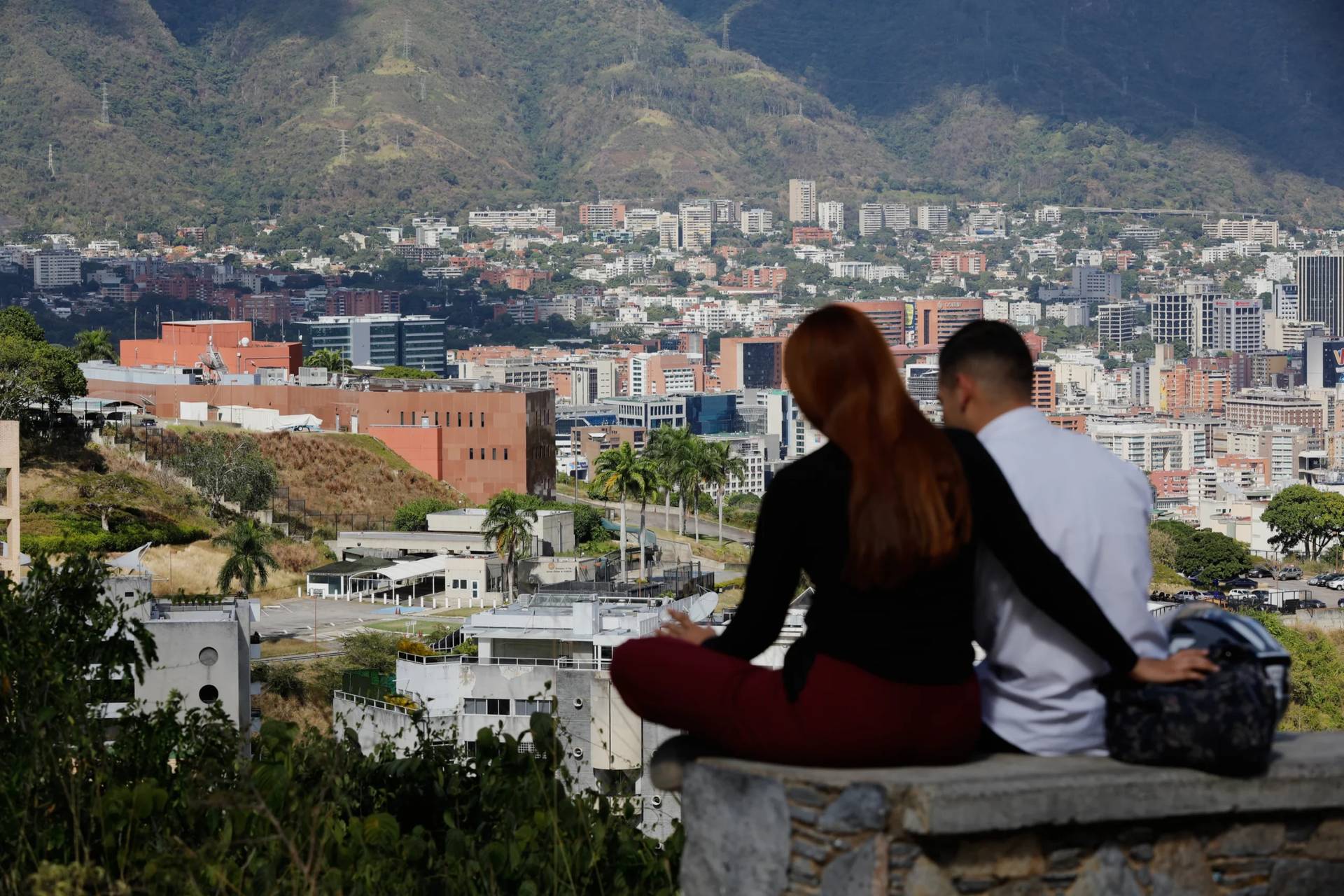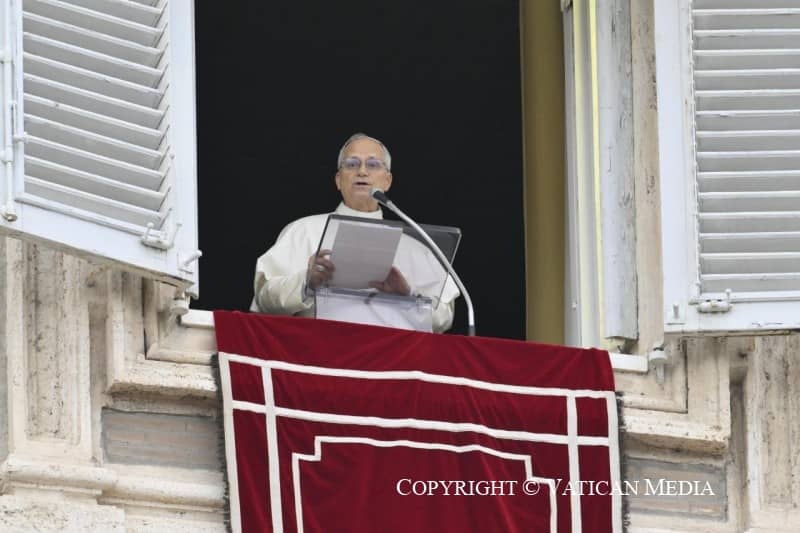ROME – Archbishop Jorge Lozano of San Juan, Argentina, doesn’t look like one of the most influential people in the Catholic Church: His pectoral cross is wooden, handmade for him by a prison inmate. The “chain” is of jute instead of a precious metal.
Yet the former auxiliary bishop for then-Cardinal Jorge Bergoglio – now better known as Pope Francis – in Buenos Aires is the Secretary General of the conference of bishops of Latin America and the Caribbean (CELAM).
He’s also one of the organizers of the upcoming Ecclesial Assembly taking place in Mexico City in November, with the participation of 200 bishops, 200 priests and deacons, 200 men and women religious, and 400 lay people.
The scope of the assembly process is to prepare the Latin American Church for two major anniversaries: 2031, the 500th anniversary of the apparition of Our Lady of Guadalupe, and 2033, the 2,000th anniversary of Christ’s death and resurrection.
RELATED: Latin American faithful prepares for November meeting to revitalize Church
Currently in Rome, he also took part of last weekend’s opening of the synodal consultation ahead of 2023 Synod of Bishops. Lozano spoke with Crux about the differences between the Latin American assembly and the Synod, as well as what he hopes both processes will accomplish.
Crux: How did you experience the first day of the Synod?
Lozano: With intensity. We have been with the CELAM presidency for several days, so, in my scheme of things, it was not the first day, because all the other visits we made had to do with the synodal process. And we culminated with a meeting with the pope. Cardinal Leopoldo Brenes [of Managua, Nicaragua] could not be there because he just had COVID-19 and he is recovering. It was a really good audience.
Why?
It is the first time I have been with him since I became secretary of CELAM, and we gave him reports of the processes CELAM is going through, with a path of renewal and restructuring, which has to do with an organizational issue, but also of adapting ourselves to this particular moment in the life of the Church. We also gave him a version of the new statutes, which we also presented to the Holy See, which can still be modified, and we also gave him a publication that we made for internal use with the result of the first time of listening, the process that we did from March until the end of August. It is a “raw” material, which was not analysed or discerned or organized, but it is just what the people said.
How many people spoke?
Between 65,000 and 70,000 people, in different spaces, some also individually, because there was the alternative on the platform. And then there were around 15,000 people who did so from about 50 thematic forums, which dealt with everything from daily things in the life of the church to social and environmental issues.
Looking ahead to November, when the meeting will be held in Mexico City, how are you preparing?
In these weeks we are analysing the raw material, because we are preparing what is called the “document for discernment,” which is to collect what the people contributed, to prepare by the end of October a text with some questions that we can deliver to the little more than 100 assembly members, to work on it from November 21 to 28.
What is the importance of the Ecclesial Assembly?
Up to now, the tradition of Latin America, since the beginning of evangelization, we have had many synods and provincial councils. More recently, since the 1950s, there have been five general conferences of the episcopate, gathering representatives of the bishops of each country every 10 or 12 years, and making a discernment about the situation of reality. The last one was in Aparecida, in 2007. In an assembly of the presidents and vice presidents of each of the 22 conferences that make up CELAM in 2019, there was a mandate for the new presidency to ask the pope for the possibility of convening a sixth general conference. When in September of that year the request was made, he said no, that there is still much to recover from Aparecida.
He recommended for us to organize a meeting of all the people of God: To deepen, to evaluate, to see what was done and what is still pending. He gave us freedom with the format, but insisted that it should not be only of bishops. And we decided on the assembly format, because a meeting, although very positive, in general begins and ends, but it does not develop processes. We did not want something academic either, with conferences on Aparecida. So we presented this idea to the pope, he approved it, and in November 2020 we discussed the methodology, and the pope started this process on January 24, calling for this ecclesial assembly which has several phases.
The first phase was of listening, the current phase is of listening. in November, there will be 1000 delegates from the continent, including assembly members from the Latino communities of the United States and Canada. The assembly will deliver some proposals regarding pastoral challenges. With CELAM, we are going to discern these proposals and make a return, to have pastoral options that will accompany us until 2031, which is the 500th anniversary of the apparitions of the Virgin of Guadalupe to San Diego, and 2033, when the 2000th anniversary of the redemption will be celebrated.
What would you say to the people who think that their voice does not count – neither in the synod nor in the assembly – because they are disillusioned?
I would do more than say, because those who are disillusioned do not motivate themselves with words, but with deeds. If the assembly succeeds in gathering the contributions of the people of God … There are a thousand assembly members, not 40 people. And these one thousand will give an account of the process of the assembly, and will be able to give testimony of having been listened to and feeling represented in the meetings.
When I see situations of scepticism, I understand it, because it is part of the path of life, and when you have wounds, you do not want to get hurt again, and it is difficult to trust again. The way is to do the right thing, rather than talk.
Who are these 1,000 assembly members?
There will be 200 bishops, 200 priests and deacons, 200 men and women religious, and 400 lay people. Among the laity, of different ages and dedications, and we also wanted to include the voices that are not always recognized, such as those who are in prison, those who are in addiction recovery communities, those who work with people in street situations, in Afro-American pastoral work. We want to gather the opinions of those who are part of the usual organic structure of the life of the Church, but also of these people who are baptized and who respond to the pope’s call to focus our attention on the peripheries, both geographical and existential.
How do you understand or differentiate the process of the Latin American Assembly and the Synod of the universal Church?
The Ecclesial Assembly is not a Latin American synod, and the universal Synod is not an assembly. The Synod is of bishops, and it wants to analyse a question related to the universal church regarding a synodal church in communion, participation and mission, with an enormous richness and potential. But it is not seeking to set the path for the Church in preparation to 2031.
Canonically, is the assembly a novelty?
Yes, it means that the dioceses, or in this case at the continental level, we are seeking to define some challenges and pastoral responses for our own ecclesial reality. It is a concrete exercise of synodality, that is why it is so important for us to understand the two processes as simultaneous, part of the same synodal spirit, but of a different nature. This simultaneity also happens in life.
Follow Inés San Martín on Twitter: @inesanma













